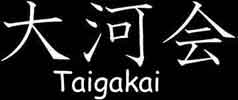
|

|

|

|
 |
||
A little bit about IaidoFrom very early times Iaido has evolved as the great sword art of Japan. It began with the refinements of swordmaking and its development has been at the centre of Japanís historical martial arts.Iaido is, physically, the art of drawing the sword and attacking one or more opponents in one flowing, continuous motion. The object of Iaido is to develop ones mind and body and the emphasis is on developing ones ability to remain calm and in control of oneself when under pressure. However the true spirit of Iaido does not necessarily mean to cut an enemy, but rather to cut the enemy within oneself. Victory in Iai is the non-revengeful heart and the cessation of conflict through not drawing the sword. Thus you may understand why Iai of old was called Saya-no-Uchi, 'invincibility without drawing the sword'. In other words, Iai is a training process towards human perfection, never of murderous intent, but peaceful minded. The modern significance of Iai is peace and tranquillity for human life. In the larger sense Iai means the Way of Dwelling in Harmony, through endless practice seeking harmony with the universe. Iaido is practised by beginners using a Bokuto or wooden sword. When a basic level of proficiency is attained the practitioner can begin to use an Iaito, a metal sword, which cannot hold a sharp edge. An Iaito may be used up to 5th dan and after this a Shinken should be used. This is the traditional, razor sharp sword of the Samurai and is very expensive to buy. Practice in Iaido involves learning basic cutting techniques and using them in forms or kata. A form is a sequence of defined moves against an imaginary opponent or opponents. There are many schools of Iaido and each has its own set of forms with functional and stylistic differences between the schools. Some schools are ancient and some modern : as a beginner you will start by learning the twelve forms of Seitei Iaido which were created in the 1970s specially for beginners. |
||
 |
||